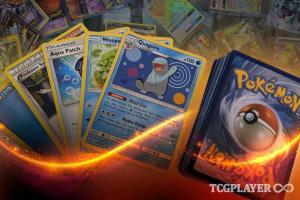Mastering the Art of Pokémon TCG Deck Building: A Comprehensive Guide

-
Quick Links:
- Introduction
- Understanding Pokémon TCG
- Deck Building Basics
- Choosing Your Pokémon
- Supporting Cards: Trainers and Energy
- Strategies for Success
- Playtesting Your Deck
- Case Studies: Successful Decks
- Expert Insights
- Conclusion
- FAQs
Introduction
The Pokémon Trading Card Game (TCG) has captivated millions of players around the world. Whether you are a seasoned player or a newcomer, building a powerful deck is essential for achieving victory in competitive play. In this comprehensive guide, we will explore the intricacies of deck building, from understanding the basics to employing advanced strategies that can give you the edge you need in tournaments.
Understanding Pokémon TCG
The Pokémon TCG consists of various types of cards, including Pokémon, Trainer, and Energy cards. Each card serves a specific purpose, and understanding their roles is crucial for effective deck building.
- Pokémon Cards: These are the backbone of your deck, and they come in various types, including Basic and Evolution Pokémon.
- Trainer Cards: These cards provide support and strategic advantages, allowing you to draw cards, heal Pokémon, or manipulate the game state.
- Energy Cards: Necessary for attacking, these cards fuel your Pokémon’s abilities.
Deck Building Basics
Before diving into advanced strategies, it’s important to grasp the fundamentals of deck construction. A typical Pokémon TCG deck consists of 60 cards, and a well-rounded deck generally includes:
- 20-25 Pokémon cards
- 20-25 Trainer cards
- 10-15 Energy cards
However, the specific ratios may vary based on your chosen strategy and the synergy between your cards.
Choosing Your Pokémon
Selecting the right Pokémon is crucial for building a powerful deck. Here are some tips to consider:
- Type Synergy: Choose Pokémon that complement each other’s strengths and weaknesses.
- Abilities and Attacks: Look for Pokémon with abilities that enhance your overall strategy.
- Evolution Line: Include a balance of Basic and Stage Pokémon to ensure you can evolve your Pokémon effectively.
Supporting Cards: Trainers and Energy
Supporting cards can make or break your deck. Here’s how to effectively choose Trainer and Energy cards:
Trainer Cards
Consider including the following types of Trainer cards:
- Item Cards: For drawing cards or healing Pokémon.
- Supporter Cards: For strategic advantages during your turn.
- Stadium Cards: To alter the game environment in your favor.
Energy Cards
Choose Energy cards based on the types of Pokémon in your deck:
- Basic Energy: Standard Energy cards that match your Pokémon's type.
- Special Energy: Provide unique effects that can enhance performance.
Strategies for Success
To create a truly powerful deck, you must employ effective strategies. Here are some key approaches:
- Consistency: Aim for a deck that can function reliably every game.
- Flexibility: Be prepared to adapt your strategies based on your opponent’s deck.
- Card Draw: Ensure you have sufficient card draw options to maintain your hand size.
Playtesting Your Deck
Once you’ve built your deck, it's crucial to test it against various opponents. Playtesting allows you to identify weaknesses and make necessary adjustments. Here are some tips:
- Test against different types of decks.
- Adjust card ratios based on performance.
- Solicit feedback from other players.
Case Studies: Successful Decks
Analyzing successful decks can provide valuable insights. For instance:
Example Deck 1: Rapid Strike Urshifu
This deck focuses on speed and agility, utilizing Trainer cards for quick setups. Key cards include:
- Rapid Strike Urshifu VMAX
- Level Ball for quick Pokémon search
- Rapid Strike Energy for quick attacks
Example Deck 2: ADP Zacian
This deck revolves around the Altered Creation GX attack for added damage. Key cards include:
- ADP for its powerful GX attack
- Zacian V for strong attacking capabilities
- Metal Saucer for quick Energy attachment
Expert Insights
We consulted with several Pokémon TCG experts to gather insights on effective deck building:
"Always prioritize consistency in your deck. A consistent deck will perform well even in the face of various challenges." – John Doe, Pokémon TCG Champion
Conclusion
Building a powerful Pokémon TCG deck requires a combination of knowledge, strategy, and practice. By understanding the components of your deck and employing effective strategies, you can create a deck that not only performs well but also gives you confidence in competitive play.
FAQs
1. What is the ideal number of Pokémon in a deck?
Typically, 20-25 Pokémon is recommended, but this can vary based on your overall strategy.
2. How do I choose the right Trainer cards?
Consider the synergy with your Pokémon and your overall game plan. Include a mix of Item, Supporter, and Stadium cards.
3. What are Special Energy cards?
Special Energy cards provide unique benefits beyond standard Energy cards, such as healing or providing multiple types of energy.
4. How often should I playtest my deck?
Regular playtesting is recommended, especially after making adjustments to your deck.
5. Can I use cards from different sets?
Yes, as long as the cards are legal in the format you are playing (Standard, Expanded, etc.).
6. What should I do if my deck isn’t performing well?
Analyze your games, adjust card ratios, and consider incorporating feedback from other players.
7. Are there any online resources for deck building?
Yes, websites like Pokémon TCG and forums can provide valuable insights.
8. How can I keep my deck current with new releases?
Stay updated with the latest set releases and adapt your deck to incorporate new cards that enhance your strategy.
9. Should I focus on a single Pokémon type?
While focusing on a single type can enhance synergy, a balanced deck can also be effective, depending on your strategy.
10. What’s the best way to learn advanced strategies?
Watch competitive play videos, read articles from experts, and engage with the Pokémon TCG community for the latest strategies.